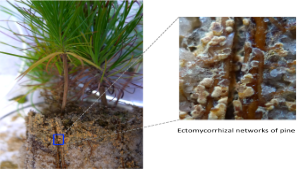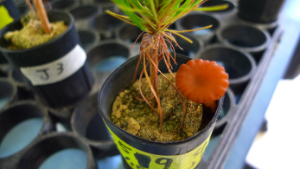

About Our Research
Suillus-Pinaceae Compatibility and Co-evolution
We use Suillus as the model to study the genomic and genetic pattern of ectomycorrhizal fungal (EMF) - conifer interactions. We ask: How Suillus and their host communicate to each other and how does this outcome contribute to soil nutrient storage and plant fitness. Using the integrated tools of metaomics, we analyze the genes and gene products that are involved in host compatibility. We also servey genetic compatibility of Suillus-Pinaceae at species and population levels.
More information for this project and the collaborators can be found on Suillus Consortium website.
This project is supported by: JGI/EMSL FICUS#49437/49514 (yrs16-19); NSF-DBI-1554181 (yrs16-19); JGI-CSP#502981 (yrs16-19)
Soil Carbon Cycling Driven by Symbiosis
In collaboration with Colin Averill, Jenny Talbot and Rytas Vilgalys, we use Ectomycorrhizal fungi (EMF) as our model system to study the association between microbial communities and their ecosystem function. This project focuses on identifying the transcripts, proteins and metabolites that are associated with symbiosis, soil carbon storage and green house grass emission.
This project is supported by: JGI/CSP 503285 (yrs 17-18); JGI/EMSL FICUS#49989 (yrs 17-19)
Dynamics of soil microbiomes underlying foreage ecological system
By integrating advanced metaomics and biogeochemical technologies we explore how plant-microbial interactions regulate nitrogen, carbon retention in pastures.
